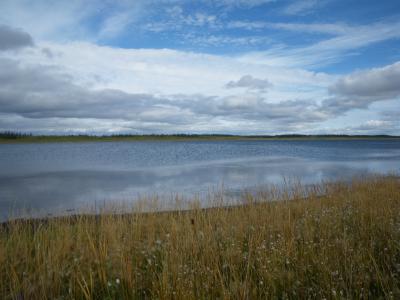Researchers from the U.S. Geological Survey and McGill University have found here is new permafrost forming around Twelvemile Lake in the interior of Alaska.
Twelvemile Lake, and many others like it, have been shrinking over the past thirty years, now being 15 feet shallower than three decades ago.
As the lake recedes, bands of willow shrubs have grown up on the newly exposed lake shores over the past twenty years. What Martin Briggs from the U.S. Geological Survey and Prof. Jeffrey McKenzie from McGill's Dept. of Earth and Planetary Science have just discovered is that the extra shade provided by these willow shrubs has both cooled and dried the surrounding soil, allowing new permafrost to expand beneath them.

As Twelvemile Lake recedes willow shrubs have planted themselves, permitting the soil beneath them to develop new permafrost. Credit: Martin Briggs,US Geological Survey
The researchers were initially very excited by this find but after analyzing the thickness of the new permafrost and projecting how it will be affected by continued climate change and the expected rise in temperature in the Arctic of 3°C, they arrived at the conclusion that the new permafrost won't last beyond the end of the century.
Still, that is almost 90 years away. That's a lot of time to fix the climate issue.

Citation: "New permafrost is forming around shrinking Arctic lakes, but will it last?", Martin Briggs et al Geophysical Research Letters doi/10.1002/2014GL059251/






Comments